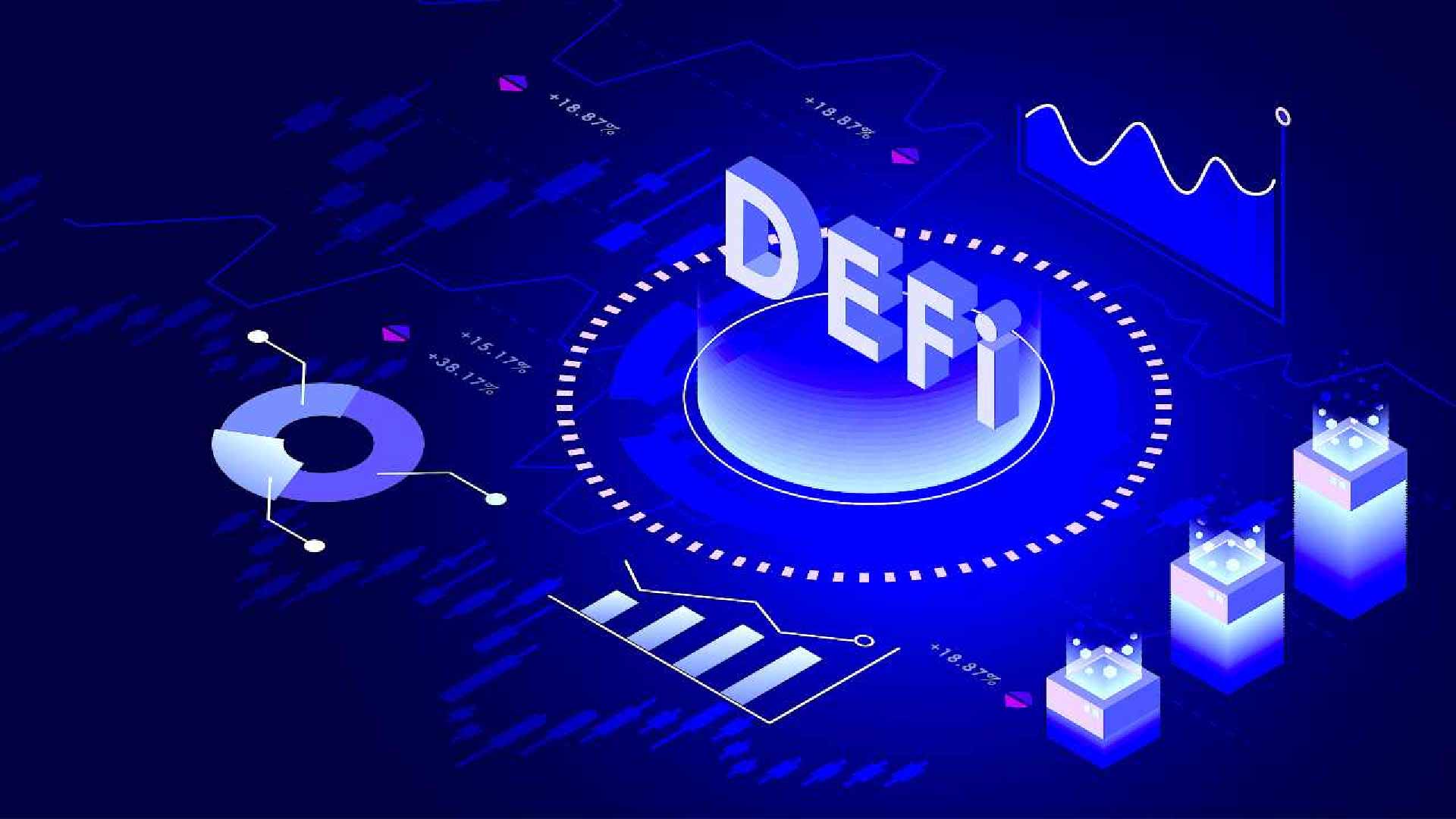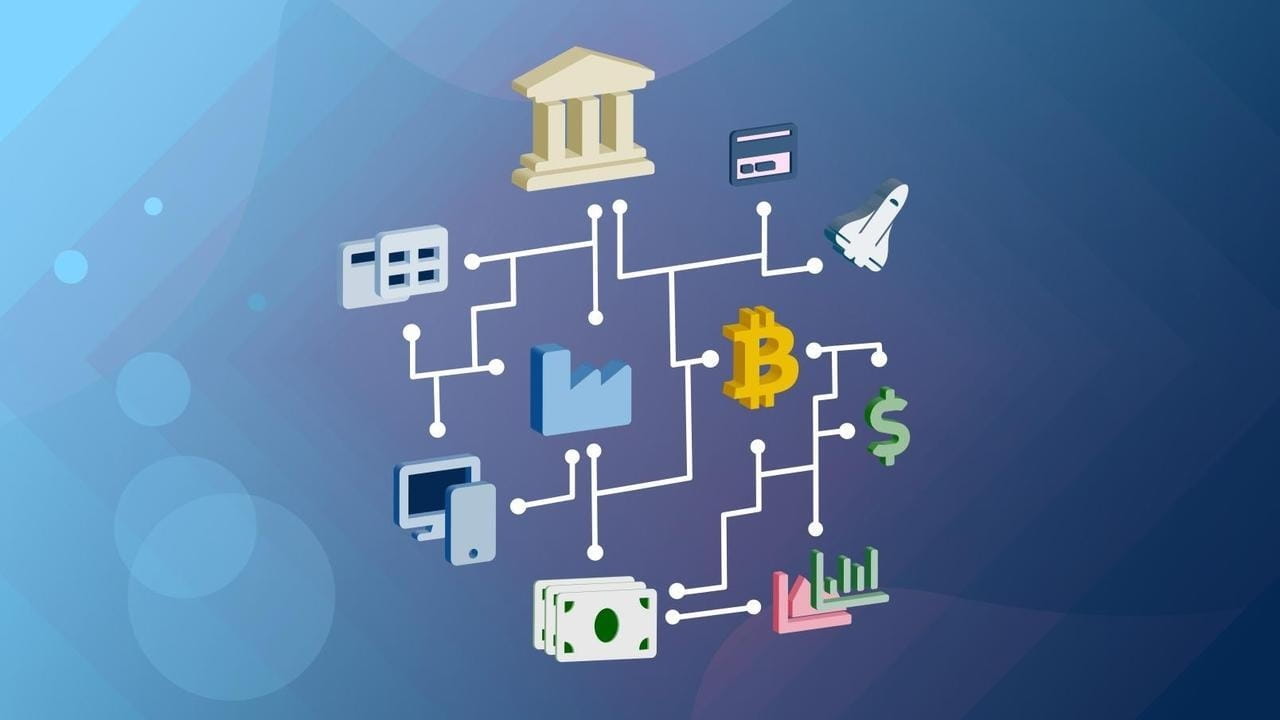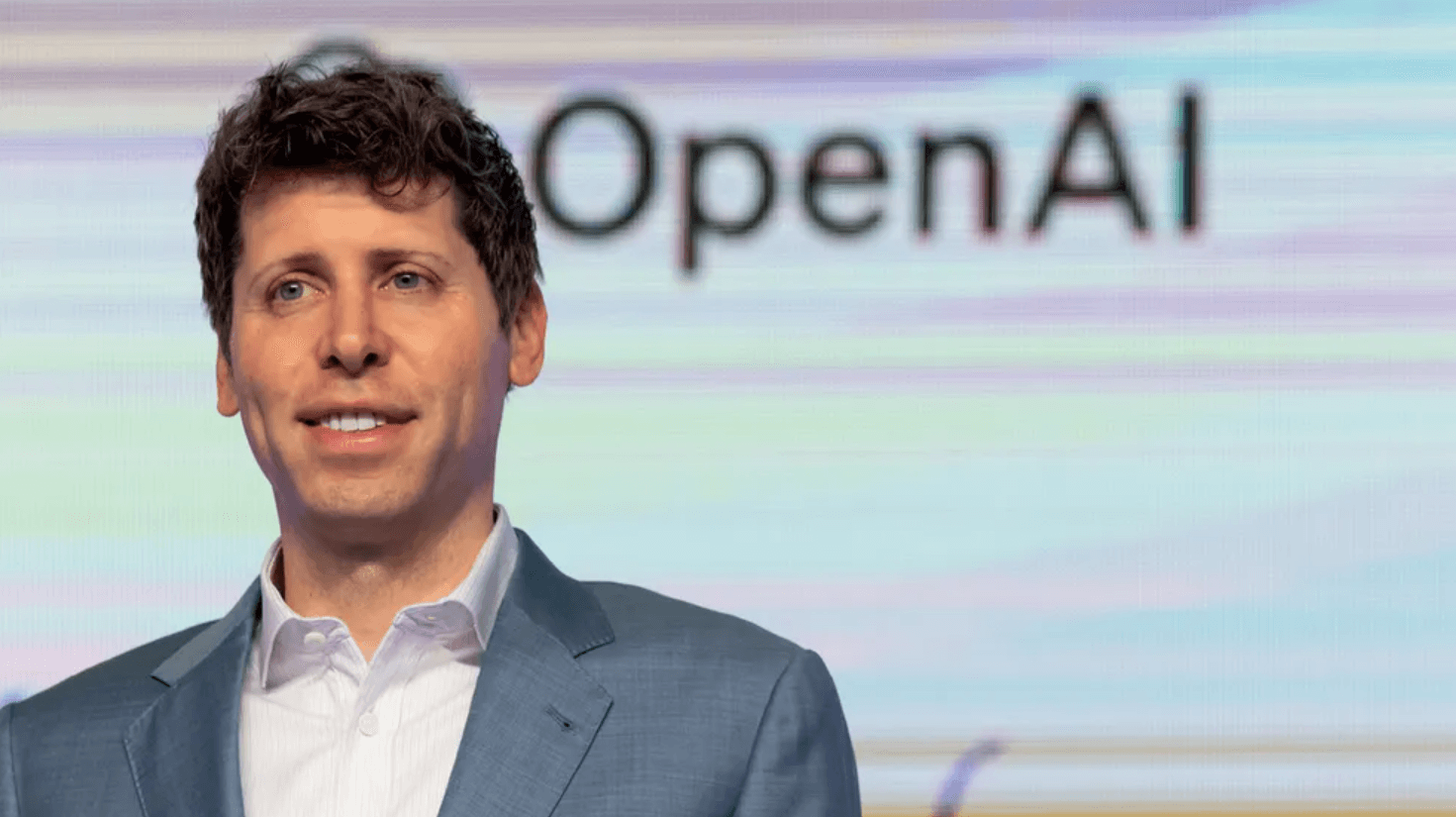Exploring the World of Decentralized Finance

The emergence of decentralized financial systems marks a significant shift in how individuals and institutions interact with monetary tools. This evolution redefines traditional paradigms, offering novel methodologies for asset management and transaction processing. With a strong emphasis on autonomy and accessibility, this new wave of innovation attracts attention from various sectors.
As people increasingly seek alternatives to conventional banking systems, understanding these alterations becomes crucial. The decentralized nature enables participants to engage directly with one another, circumventing the need for intermediaries. This empowerment allows for greater control over personal wealth and encourages the formation of diverse economic opportunities.
Throughout this exploration, we will delve into the mechanics underlying this revolution and analyze the transformations occurring within the monetary ecosystem. By examining both the potential advantages and challenges ahead, we aim to provide insights into how these advancements are reshaping the financial realm.
What is Decentralized Finance?
In recent years, a novel approach to monetary services has emerged, reshaping the traditional landscape of capital markets and lending practices. This innovative framework leverages blockchain technology to create financial systems that operate independently of centralized intermediaries, enabling users to engage in transactions directly with one another.

This paradigm shift offers several distinctive characteristics:
- Accessibility: Individuals worldwide, regardless of their geographical location, can access various financial services without the need for a bank account or formal identification.
- Transparency: Transactions are recorded on public ledgers, allowing for real-time visibility and accountability.
- Programmability: Smart contracts facilitate automatic execution of agreements when predetermined conditions are met, minimizing the need for intermediaries.
- Resilience: By operating on decentralized networks, these systems reduce the risk of single points of failure commonly associated with traditional institutions.
The evolution of this innovative sector is marked by its diverse range of applications, including lending platforms, decentralized exchanges, and stablecoins, each contributing to a more inclusive and efficient economic environment.
Key Components of the DeFi Ecosystem
The decentralized financial landscape consists of various interconnected elements that function together to create a robust alternative to traditional monetary systems. This environment leverages blockchain technology to enhance accessibility, transparency, and security in financial transactions. Understanding the core components is essential to grasp the full scope of this innovative movement.
Core Elements
- Smart Contracts: Automated agreements executed on blockchain platforms that facilitate transactions without intermediaries.
- Liquidity Pools: Collections of cryptocurrencies locked in a smart contract, enabling users to trade assets while providing liquidity in exchange for rewards.
- Decentralized Exchanges (DEXs): Platforms that allow users to trade assets directly without relying on a central authority.
- Stablecoins: Cryptocurrencies pegged to stable assets, usually fiat currencies, to minimize price volatility and serve as a reliable medium of exchange.
- Lending Protocols: Systems that enable users to borrow and lend assets efficiently, often through collateralization to ensure security.
Supporting Technologies
- Blockchain Networks: Underlying infrastructure that provides the foundation for decentralized applications and their operations.
- Wallets: Digital tools necessary for users to store, send, and receive cryptocurrency securely.
- Oracles: Services that push real-world data to blockchain applications, expanding their functionality and utility.
These components work in cohesion, creating a self-sustaining ecosystem that challenges the established financial paradigms. As more individuals engage with these tools, the potential for innovation and disruption in the industry continues to grow.
The Role of Smart Contracts
Smart contracts serve as a revolutionary mechanism that automates agreements and transactions within digital ecosystems. These self-executing contracts utilize blockchain technology to ensure that the terms are upheld without the necessity for intermediaries. By embedding protocols directly into the code, they provide a new level of efficiency, transparency, and security in various applications.
Automation of Processes
One of the primary advantages of smart contracts lies in their ability to automate various procedures. This capability not only eliminates the need for manual intervention but also significantly reduces the risk of human errors. Automated systems guarantee that actions are executed precisely according to predefined conditions, leading to timely and reliable outcomes.
Trust and Transparency
Trust is a crucial component in any transaction. Smart contracts enhance credibility by utilizing decentralization and immutability features. Once deployed on the blockchain, the code is visible to all participants, ensuring that the agreements cannot be altered without consensus. This fosters a transparent environment where stakeholders can interact with confidence, thereby reinforcing the integrity of the entire system.
Benefits of Decentralized Financial Systems
Decentralized financial architectures offer a range of advantages that challenge traditional banking models. By leveraging blockchain technology, these systems create environments that increase accessibility, reduce reliance on centralized institutions, and empower users with greater control over their assets.
One significant benefit is enhanced transparency. Transactions recorded on a blockchain are immutable and publicly verifiable, fostering trust among participants. This visibility helps mitigate fraud and mismanagement, creating a safer financial landscape.
In addition, decentralized frameworks often reduce operational costs. Without intermediaries that typically impose hefty fees, users can engage in seamless transactions with minimal overhead. This cost-effectiveness can lead to more competitive pricing of services and greater financial inclusion for underserved populations.
Furthermore, these systems enable swift operations, often processing transactions in a matter of minutes, regardless of geographical barriers. This efficiency caters to the growing demand for quick and secure exchanges in today’s fast-paced digital world.

Finally, the empowerment of individuals stands out as a pivotal aspect. Users retain full ownership of their funds and can make decisions without the constraints imposed by traditional institutions. This autonomy fosters innovation and creativity in how financial services are utilized and developed.
Challenges Facing the DeFi Sector
The emergence of decentralized financial systems has brought with it a myriad of hurdles that developers and users must navigate. As this innovative landscape continues to evolve, it faces significant obstacles that could hinder growth and adoption in the wider economic arena.
One prominent issue involves regulatory compliance, as traditional financial authorities strive to adapt to new technologies. This uncertainty can create apprehension among potential users and investors, as they grapple with questions surrounding legality and the protection of their assets.
Another critical challenge is security vulnerabilities present in many protocols. Smart contracts, while revolutionary, are not immune to exploitation. Hacks and bugs can lead to substantial losses for users, generating skepticism regarding the safety of these platforms.
Additionally, the complexity of many decentralized applications can serve as a barrier to entry, deterring individuals unfamiliar with this technical environment. User experience must be simplified to facilitate broader participation and understanding.
Liquidity is also a pressing concern, as many decentralized platforms struggle to attract sufficient capital. Without adequate liquidity, the functionality and efficiency of these solutions can be compromised, limiting their appeal to users seeking seamless transactions.
Finally, the scalability of these emerging systems remains a challenge. As more participants enter the ecosystem, ensuring that platforms can handle increased transaction volumes without sacrificing speed or cost becomes crucial.
The Future of Finance with DeFi
The evolution of decentralized ecosystems is poised to redefine the monetary landscape, creating new paradigms for transactions, investments, and asset management. This shift promises enhanced accessibility, transparency, and security, enabling users to engage directly without intermediaries. As traditional systems grapple with inefficiencies and inclusivity challenges, innovative frameworks are emerging to address these gaps effectively.
In this changing environment, individuals stand to gain unprecedented control over their financial activities. By leveraging blockchain technology, users can participate in a borderless economy, free from the limitations that once hindered access to essential services. This transformation heralds a new era where engagement becomes seamless, inviting collaboration across diverse communities.
| Aspect | Traditional Systems | Decentralized Ecosystems |
|---|---|---|
| Accessibility | Limited access for underbanked populations | Open participation for anyone with an internet connection |
| Transparency | Opaque processes | Public ledger ensures all activities are visible |
| Intermediaries | Relying on banks and financial institutions | Direct peer-to-peer transactions |
| Transaction Costs | High fees for services | Lower fees due to reduced infrastructure |
As these innovative structures gain traction, they will likely disrupt established paradigms, compelling traditional institutions to adapt or risk obsolescence. The convergence of technology with monetary practices heralds an innovative chapter that promises to empower individuals and stimulate economic participation on an unprecedented scale.

Q&A: About defi
What is DeFi and how does it differ from traditional finance?
DeFi, or Decentralized Finance, refers to a financial ecosystem built on blockchain technology that aims to recreate and improve upon traditional financial systems without the need for intermediaries like banks. Unlike traditional finance, which relies on centralized institutions to facilitate transactions, DeFi operates on smart contracts deployed on blockchains such as Ethereum. This decentralized structure allows for peer-to-peer transactions, greater transparency, and increased accessibility for users worldwide. In essence, while traditional finance is governed by regulatory bodies and intermediaries, DeFi empowers individuals by giving them control over their own assets in a trustless environment.
How does DeFi work and what are its benefits of DeFi?
DeFi is an umbrella term for decentralized financial services that operate without middleman or third parties. Using DeFi allows users to participate in yield farming, defi lending, and other DeFi solutions through smart contracts and decentralized apps (dApps). The benefits of DeFi include permissionless access, transparency, and the ability to earn interest on crypto holdings.
What are some common DeFi use cases in the crypto space?
Various DeFi use cases include DeFi lending, decentralized exchanges, and yield farming. DeFi allows users to trade crypto assets, earn interest through staking, and access DeFi products without relying on centralized financial institutions. Many DeFi applications are built on the Ethereum blockchain, ensuring a decentralized nature of DeFi transactions.
How does DeFi differ from centralized finance?
DeFi vs centralized finance highlights a key difference: centralized finance relies on financial institutions as intermediaries, while DeFi aims to remove third parties by using blockchain technology. In the DeFi space, smart contracts and decentralized platforms facilitate transactions, giving users full control over their digital assets through a crypto wallet and private key.
What are the risks of DeFi that users should be aware of?
While DeFi offers many advantages, the risks of DeFi include smart contract vulnerabilities, high volatility in DeFi tokens, and potential security breaches. Since DeFi is still evolving, participating in DeFi requires careful due diligence and an understanding of how DeFi creates new financial opportunities while also exposing users to risks.
How can someone get started in DeFi and learn about DeFi applications?
To get started in DeFi, users should first learn about DeFi by exploring a guide to decentralized finance, understanding how DeFi development works, and setting up a secure crypto wallet. Many DeFi platforms provide decentralized apps (DeFi apps) where users can interact with DeFi services such as DeFi lending and trading DeFi tokens.


